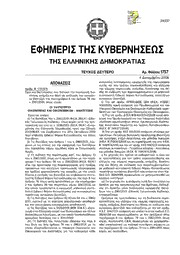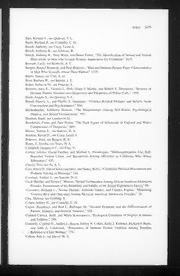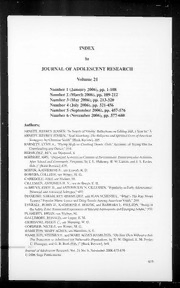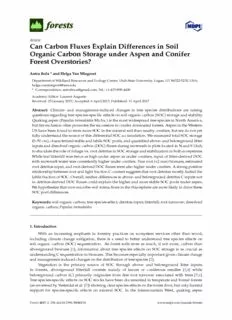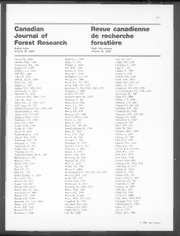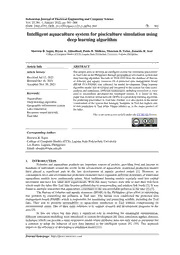
Intelligent aquaculture system for pisciculture simulation using deep learning algorithm PDF
Preview Intelligent aquaculture system for pisciculture simulation using deep learning algorithm
Indonesian Journal of Electrical Engineering and Computer Science Vol. 25, No. 1, January 2022, pp. 561~568 ISSN: 2502-4752, DOI: 10.11591/ijeecs.v25.i1.pp561-568 561 Intelligent aquaculture system for pisciculture simulation using deep learning algorithm Sherwin B. Sapin, Bryan A. Alibudbud, Paulo B. Molleno, Maureen B. Veluz, Jonardo R. Asor College of Computer Studies (CCS), Laguna State Polytechnic University, Laguna, Philippines Article Info ABSTRACT Article history: The project aims to develop an intelligent system for simulating pisciculture in Taal Lake in the Philippines through geographical information system and Received Jul 12, 2021 deep learning algorithm. Records of 2018-2020 from the database of Bureau Revised Oct 16, 2021 of fisheries and aquatic resources IV-A-protected area management board Accepted Nov 30, 2021 (BFAR IVA-PAMB) was collected for model development. Deep learning algorithm model was developed and integrated to the system for time series analysis and simulation. Different technologies including tensorflow.js were Keywords: used to successfully developed the intelligent system. It is found on this paper that recurrent neural network (RNN) is a good deep learning algorithm Aquaculture for predicting pisciculture in Taal lake. Further, it is also shown in the initial Deep learning algorithm visualization of the system that barangay Sampaloc in Taal has highest rate Geographic information system of fish production in Taal while Tilapia nilotica sp. is the major product of Lake simulation the latter. Recurrent neural network This is an open access article under the CC BY-SA license. Taal lake Corresponding Author: Sherwin B. Sapin College of Computer Studies (CCS), Laguna State Polytechnic University Los Baños, Laguna, Philippines Email: sbsapin@lspu.edu.ph 1. INTRODUCTION Fisheries and aquaculture products are important sources of protein, providing food and income to hundreds of individuals around the world. In the advancement of aquaculture, traditional production models have played a significant part in the fast development of aquatic product output [1]. However, as consumption level and environmental protection awareness have expanded, different downsides of traditional aquaculture models have continuously arisen. Most traditional farming models regularly need low capital investment and have low labor skill requirements. With this many farmers were able to start their fish farm which made the lakes like Taal lake become polluted due to overcrowding and untaken fish foods [2]. It was found in multiple researches that aquaculture contributes to the uncontrollable pollution in the lake [3]-[7]. The Bureau of fisheries and aquatic resources (BFAR) in the Philippines gives effort in minimizing this problem by controlling the pollution in Taal lake. The bureau even established the protected area management board (PAMB) which is responsible for monitoring and protecting wildlife, including the Taal lake. They aim to promote sustainability in aquaculture production in Taal without compromising its environmental status. One of their main solutions is to support research and development programs in the area [3]. In this era where big data plays a significant role in modelling for meaningful representation, different simulation modelling were introduced in system development [8]. Data simulation applies dynamic technique which can provide a more responsive model where attributes were not only stand as parameter but a criterion to adopt the behavior of new data inputted to the intelligent system [9], [10]. This approach improves the efficiency of developing a simulation model [11]. Journal homepage: http://ijeecs.iaescore.com 5 6 2 ISSN: 2502-4752 For the past decade, the reconciliation of geographical information system (GIS) with natural demonstrating has become a significant exploration theme. The utilization of GIS for demonstrating gives straightforwardness and exactness in the administration and spatial portrayal of information [12]. The used of GIS in simulating data was already proven to be efficient and effective for monitoring [13], [14]. Machine learning and deep learning algorithms were consistently used for effective modelling, forecasting and classifying data [15]. The utilization of a machine learning algorithm is popular in the development of artificial intelligence for computer systems [14], [16], [17]. Machine learning was used in different discipline such as fire incidents, health, education and even in environmental modelling. With this technology, it is possible to provide decision making through pattern recognition and time series analysis [18]-[20]. Recurrent neural networks (RNNs) are designed to operate upon sequences of data. They have proven to be very effective for natural language processing problems where sequences of text are provided as input to the model. RNNs have also seen some modest success for time series forecasting and speech recognition [21]. This paper mainly aims to develop an intelligent aquaculture system for pisciculture simulation using deep learning algorithm. 2. METHODOLOGY In developing the system, software development life cycle was adopted and modified. Before identifying works for each phase, a system architecture was created to have a clear visualization of the project. It is shown in Figure 1 that the intelligent aquaculture system is consists of four (4) main modules such as user management module, monitoring module, cage management module and GIS module. Figure 1. System architecture 2.1. Planning and data gathering All the required materials were identified in this phase such as data, software and hardware requirements. An interview to the Bureau of fisheries and aquatic resources IV-A-protected area management board (BFAR IVA-PAMB) was conducted to understand their information gathering and processing. The result of interview is used as basis for developing the intelligent system. For model development, the three (3) years records of PAMB were collected. The attributes inside the database were all considered for forecasting or time series analysis. Table 1 represents the attributes and its description and will be used as the dataset for model development. Likewise, the employees of the said department were the ones to evaluate the developed and system for usability and acceptability testing. Figure 2 is used as representation of modules interaction in every target user of the system. It is shown in the figure that the administrator or the Bureau of fisheries and aquatic resources (BFAR) was capable of accessing each module included in the system. Hence, the users or the fish cage operator can only access the fish cage management module. However, the fish cage operator is still capable of viewing the geographical representation status of Taal lake but was not allowed to edit. The use case diagram provides a great help in the development of the system. Indonesian J Elec Eng & Comp Sci, Vol. 25, No. 1, January 2022: 561-568 Indonesian J Elec Eng & Comp Sci ISSN: 2502-4752 563 Table 1. Attributes of data from PAMB database Attributes Descriptions Disaster Type Types of Disaster Kinds of Species Fish species Amount of Damage Exact number of damages Location Barangay Area Figure 2. Pisciculture web system use case diagram 2.2. Statistical treatment Likert scalar technique is used to measure the characteristics of the intelligent system. The survey questionnaires were answered by four different responses or impressions according to its intensity, measured by: four (4) strongly acceptable, three (3) acceptable, two (2) disagree and one (1) as strongly disagree as shown in Table 2. The undecided or the uncertain response was eliminated in the impressions to avoid partialities and confusions of data. Table 2. Likert scale Rating Mean Range Interpretation 4 3.51-4.00 Strongly acceptable 3 2.51-3.50 Acceptable 2 1.51-2.50 Disagree 1 1.0-1.50 Strongly disagree 2.3. Model development A model was developed by modifying the stage of knowledge discovery in databases (KDD). The typical stage of the KDD model was trimmed into three (3) phases namely; selection, preprocessing and knowledge development. This model is integrated to the system using tensorflow and keras. 2.3.1. Selection In selection stage, the dataset shown in Table 1 was used. Since the dataset is real in nature, the possible result of model development is reliable enough to integrate in the intelligent system. All the attributes shown in Table 1 are considered in developing the model. 2.3.2. Preprocessing The dataset was first undergone cleaning wherein each instance was transformed into lowercase to make sure that there was no noise in quantifying each data. Special characters such as white space and symbols were also removed to make a more meaningful data. Further, all the strings data were converted into integer to make it easier to machine to analyzed the dataset. Lastly, the dataset was divided into two parts, the train dataset and the test dataset whereas the train dataset is the 80% of the dataset while the remaining 20% is used as the test dataset. Intelligent aquaculture system for pisciculture simulation using deep learning algorithm (Sherwin B. Sapin) 5 6 4 ISSN: 2502-4752 2.3.3. Knowledge development Since the recurrent neural network was already proven effective in time series analysis [14], [18], it was chosen in this project as the deep learning algorithm to use in knowledge development. RNN is thought for managing sequential statistics. It is a sort of neural network that has a “memory” which remembers all information approximately what has been calculated. In conventional neural networks, all the inputs and outputs are independent of each other, however in instances like when it's far required to expect the next word of a sentence, the preceding words are required and hence there may be a need to don't forget the preceding phrases [22]-[24]. Figure 3 show the layers of recurrent neural network. Figure 3. Recurrent neural network layers 2.4. Evaluation The evaluation phase focus on the acceptability of the system to its users. Adopting the ISO 25010 model or the software standard, a questionnaire is developed for the users to rate the system according to the criterion of this model. To interpret the evaluation as stated above, Likert scale model was followed. Figure 4 is the most used and proven effective in evaluating an information system [17], [25]. Figure 4. ISO 25010 Model 3. RESULTS AND DISCUSSION The result and discussion show the actual systems module. This is based on the main objective of the project. Likewise, the result of acceptability testing through the use of ISO 25010 was also shown in this section. Figure 5 is the representation of the Dashboard or the landing page of the system. In this page, the user is able to saw the production of particular barangay in Taal lake. Also, the user is capable of selecting what particular date they want to see in terms of fish production. Figure 6 is the geographical information system that shows the harvested and damaged area in the lake. It stands as the simulation of the data in particular area of the lake. Hence, Figure 7 represents the forecasting that the system is capable of. Included in this module, is the confidence of the RNN in forecasting particular event like damage in selected barangay with a predictive accuracy of 91%. Lastly, Figure 8 is the report module which shows a visualization of data inputted in the system. All of this report is significant to the user specifically the BFAR IVA for they can use it for strategic planning. Indonesian J Elec Eng & Comp Sci, Vol. 25, No. 1, January 2022: 561-568 Indonesian J Elec Eng & Comp Sci ISSN: 2502-4752 565 Figure 5. Dashboard of the intelligent system showing the monitoring of cage per barangay Figure 6. Simulation of the fish cages in Taal Lake as shown in the system Figure 7. Simulation sample of the production and damaged prediction (Brgy. quiling) Intelligent aquaculture system for pisciculture simulation using deep learning algorithm (Sherwin B. Sapin) 5 6 6 ISSN: 2502-4752 production damage Figure 8. Data analytics module showing report for the production and damaged for 3 years Table 3 represents the result of evaluating the system. It is shown in the table that all the respondents strongly agreed that the system is acceptable. Further, the system is functional, efficient, usable and reliable pertaining to its target audience or users. Table 3. Evaluation questionnaire (ISO 25010) Characteristics Mean Interpretations Functional Suitability 3.78 Strongly acceptable Performance Efficiency 3.56 Strongly acceptable Compatibility 3.67 Strongly acceptable Usability 3.83 Strongly acceptable Reliability 3.84 Strongly acceptable Security 3.80 Strongly acceptable Maintainability 3.67 Strongly acceptable Portability 3.67 Strongly acceptable Overall mean 3.73 Strongly acceptable 4. CONCLUSIONAND FUTURE WORKS As proven by other researchers found in this paper, the recurrent neural network (RNN) was a good deep learning algorithm for time series analysis. Moreover, the geographical information system (GIS) was an auspicious technology that can be used in data-driven simulation to create a more efficient data analysis. A pisciculture intelligent system is needed and acceptable to an organization that was maintaining a lake’s environmental status through efficient and effective monitoring. It is suggested that the developed intelligent system must be implemented in the BFAR IV-A to help them monitor the Taal lake. Likewise, the usage of deep learning algorithm, RNN in particular must be practice in information system that aims to forecast environmental status through data driven simulation. Lastly, the author of this paper would like to give stressed that this kind of system must also be implemented in other natural resources of a country like forest. ACKNOWLEDGEMENTS This piece of work will not be accomplished without the help of the Laguna State Polytechnic University and the Bureau of Fisheries and Aquatic Resources - Protective Area Management Board (BFAR- PAMB) Region IV-A and so, the authors were wholeheartedly extending their profound gratitude to the said organizations. REFERENCES [1] K. Yue and Y. Shen, “An overview of disruptive technologies for aquaculture,” Aquaculture and Fisheries, 2021, doi: 10.1016/j.aaf.2021.04.009. Indonesian J Elec Eng & Comp Sci, Vol. 25, No. 1, January 2022: 561-568 Indonesian J Elec Eng & Comp Sci ISSN: 2502-4752 567 [2] C. Li, and D. Li, “Intelligent aquaculture,” Journal of the World Aquaculture Society, vol. 51, no. 4, pp. 808-814, 2020, doi: 10.1111/jwas.12736. [3] M. T. M. Mutia, M. C. Muyot, F. B. Torres Jr, and C. M. Faminialagao, “Status of Taal Lake Fishery Resources with Emphasis on the Endemic Freshwater Sardine, Sardinella tawilis (Herre, 1927), ”The Philippine Journal of Fisheries, vol. 25, no. 1, pp. 128-135, January 2017, doi: 10.31398/tpjf/25.1.2017C0017. [4] A. B. Vista and P. E. Norris, “Cost-Effectiveness of Nutrient Pollution Reduction in Taal Lake, Philippines,” Proceedings of the Twelfth Biennial Conference of the International Institute of Fisheries Economics & Trade, 2004. [5] D. M. Macandog et.al, “Eliciting Local Ecological Knowledge and Community Perception on Fishkill in Taal Lake through Participatory Approaches,” Journal of Environmental Science and Management, vol. 17, no. 2, pp. 1-16, 2014. [6] B. L. Querijero and A. L. Mercurio, “Water Quality in Aquaculture and Non-Aquaculture Sites in Taal Lake, Batangas, Philippines,” Journal of Experimental Biology and Agricultural Sciences, vol. 4, no. 1, pp. 109-115, 2016, doi: 10.18006/2016.4(1).109.115. [7] M. U. Mendoza et.al, "Water quality and weather trends preceding fish kill occurrences in Lake Taal (Luzon Is., Philippines) and recommendations on its long-term monitoring," Philippine Science Letters, vol. 12, no. 2, pp. 147-156, 2019. [8] B. S. Kim, B. G. Kang, S. H. Choi, and T. G. Kim, “Data modeling versus simulation modeling in the big data era: case study of a greenhouse control system,” Simulation, vol. 93, no. 7, pp. 579-594, 2017, doi: 10.1177/0037549717692866. [9] M. Yang, “Using data driven simulation to build inventory model,” 2008 Winter Simulation Conference, 2008, pp. 2595-2599, doi: 10.1109/WSC.2008.4736373. [10] I. Markovsky and P. Rapisarda, “Data-driven simulation and control,” International Journal of Control, vol. 81, no. 12, pp. 1946-1959, 2008, doi: 10.1080/00207170801942170. [11] A. S. Banerjee, S. R. Chaudhuri, P. Patwari, and L. Van Den Heever, “Data Driven Simulation Framework,” in Proceedings of ICALEPCS, 2015, pp. 749-752. [12] C. F. Gulay and M. A. T. Subion, “iSAFE: A Disaster Management Application Utilizing Georeferencing and A* Algorithm,” in Proceedings of the 2018 International Conference on Computational Intelligence and Intelligent Systems, 2018, pp. 75-79, doi: 10.1145/3293475.3293488. [13] G. M. B. Catedrilla and M. A. T. Subion, “VIP READY: A Mobile Leisure Search Engine for Visually Impaired Persons Utilizing Phone Motion and Speech Recognition,” 2018 International Seminar on Research of Information Technology and Intelligent Systems (ISRITI), 2018, pp. 453-458, doi: 10.1109/ISRITI.2018.8864282. [14] K. Li and L. Liu, “Preliminary research on modeling and simulation technology of artificial intelligence system,” IOP Conf. Series: Materials Science and Engineering, vol. 452, 2018, doi: 10.1088/1757-899X/452/4/042003. [15] J. R. Asor, G. M. B. Catedrilla, and J. E. Estrada, “A study on the road accidents using data investigation and visualization in Los Baños, Laguna, Philippines,” 2018 International Conference on Information and Communications Technology (ICOIACT), 2018, pp. 96-101, doi: 10.1109/ICOIACT.2018.8350662. [16] T. Ertekin and Q. Sun, “Artificial Intelligence Applications in Reservoir Engineering: A Status Check,” Energies, vol. 12, no. 15, 2019, doi: 10.3390/en12152897. [17] L. S. Echalar and M. A. T. Subion, “PaLife: A Mobile Application for Palay (Rice) Health Condition Classification utilizing Image Processing and Pigment Analysis towards Sustainability of Palay Production,” 2018 International Seminar on Research of Information Technology and Intelligent Systems (ISRITI), 2018, pp. 443-448, doi: 10.1109/ISRITI.2018.8864286. [18] J. L. Lerios and M. V. Villarica, “Pattern Extraction of Water Quality Prediction Using Machine Learning Algorithms of Water Reservoir,” International Journal of Mechanical Engineering and Robotics Research, vol. 8, no. 6, pp. 992-997, 2019, doi: 10.18178/ijmerr.8.6.992-997. [19] K. Sulaiman, L. H. Ismail, M. A. M. Razi, M. S. Adnan, and R. Ghazali, “Water Quality Classification Using an Artificial Neural Network (ANN),” IOP Conf. Series: Materials Science and Engineering, vol. 601, 2019, doi: 10.1088/1757-899X/601/1/012005. [20] L. Wan and Y. C. Li, “Time series trend analysis and prediction of water quality in a managed canal system, Florida (USA),” IOP Conference Series: Earth and Environmental Science, 2018, vol. 191, doi: 10.1088/1755-1315/191/1/012013. [21] J. R. Asor, J. L. Lerios, S. B. Sapin, J. O. Padallan, and C. A. C. Buama, “Fire incidents visualization and pattern recognition using machine learning algorithms,” Indonesian Journal of Electrical Engineering and Computer Science, vol. 22, no. 3, pp. 1427-1435, 2021, doi: 10.11591/ijeecs.v22.i3.pp1427-1435. [22] J. Nowak, A. Taspinar, and R. Scherer, “LSTM Recurrent Neural Networks for Short Text,” International Conference on Artificial Intelligence and Soft Computing, 2017, vol. 10246, pp. 553-562, doi: 10.1007/978-3-319-59060-8_50. [23] S.-S. Baek, J. Pyo, and J. A. Chun, “Prediction of Water Level and Water Quality Using a CNN-LSTM Combined Deep Learning Approach,” Water, vol. 12, no. 12, pp. 1-13, 2021, doi:10.3390/w12123399. [24] Y-F. Zhang, P. J. Thorburn, M. P. Vilas, and P. Fitch, “Machine Learning approaches to improve and water quality data,” 23rd International Congress on Modelling and Simulation, 2019, pp. 491-497, doi: 10.36334/modsim.2019.D5.zhangYiF. [25] G. M. B. Catedrilla, J. L. Lerios, S. B. Sapin, M. C. Lanuang, and C. A. C. Buama, “An android-based mobile educational game for disaster preparedness: an input to risk reduction management,” Indonesian Journal of Electrical Engineering and Computer Science, vol. 22, no. 2, pp. 936-943, 2021, doi: 10.11591/ijeecs.v22.i2.pp936-943. BIOGRAPHIES OF AUTHORS Dr. Sherwin B. Sapin is currently the Chairperson for Curriculum and Instruction Development and the Coordinator for Local Government Unit of Laguna State Polytechnic University-Los Baños Campus; Lead Accreditor of the Accrediting Agency of Chartered Colleges and Universities in the Philippines, Incorporated (AACCUP, Inc.); Assistant Professor IV and former Research Implementing Unit Head of the College of Computer Studies; Affiliate professor in the Graduate Studies and Applied Research; and former Chairperson of the Information and Communications Technology (ICT) Services; His research interests are in Information Technology Education, Mathematics Education, and Educational Management; He authored various research studies published in different international journals. He can be contacted at email: sbsapin@lspu.edu.ph. Intelligent aquaculture system for pisciculture simulation using deep learning algorithm (Sherwin B. Sapin) 5 6 8 ISSN: 2502-4752 Bryan A. Alibudbud was born in Bay, Laguna, Philippines on April 23, 1997. He is a graduating BSIT student of Laguna State Polythecnic University-Los Baños Campus. Mr. Alibudbud has interest in Technical Support. He is also knowledgeable on troubleshooting and computer hardware specification. He is interested in researches specially in Automotive Technology, Iot and Community based study. He can be contacted at email: bryan.alibudbud23@gmail.com. Paulo B. Molleno is currently working in LSPU-LBC as computer programmer. He is also a graduating BSIT student of Laguna State Polytechnic University-Los Baños Campus. He became a technical specialist of GIOCOTECH Society, a school organization in LSPU-LBC. He can be contacted at email: paulo.molleno24@gmail.com Maureen B. Veluz is a graduating BSIT student of LSPU-LBC. She became a secretary of GIOCOTECH Society, a school organization in Laguna State Polytechnic University-Los Baños Campus. Her research focuses on sustainable development such as food security and community-based project with environmental development. She can be contacted at email: maureenveluz0192@gmail.com. Jonardo R. Asor was born in Los Baños, Laguna, Philippines on June 12, 1990. He graduated at the Laguna State Polytechnic University - Los Baños Campus with the degree bachelor of science in information technology on March 2016. Mr. Asor finished his master in information technology at the Technological Institute of the Philippines-Manila, on October 2018. He is currently working as College Instructor at the Laguna State Polytechnic University-Los Baños Campus, Malinta, Los Baños, Laguna, Philippines. His research study focuses on the optimization and usage of machine learning algorithm and knowledge discovery in databases. He can be contacted at email: asor.jonardo@lspu.edu.ph Indonesian J Elec Eng & Comp Sci, Vol. 25, No. 1, January 2022: 561-568
The list of books you might like

The Sweetest Oblivion (Made Book 1)

Can’t Hurt Me: Master Your Mind and Defy the Odds

Better Than the Movies

The 5 Second Rule: Transform your Life, Work, and Confidence with Everyday Courage

Sticking it out: from Juilliard to the orchestra pit, a percussionist’s memoir
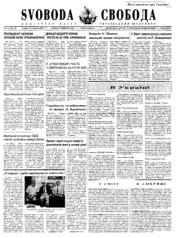
Svoboda-1995-180

DTIC ADA518756: Reforming Pentagon Decisionmaking

C anton (Extorter
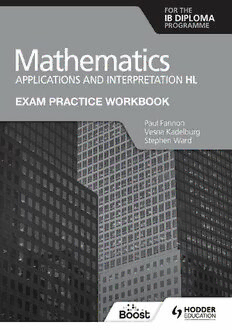
Exam Practice Workbook for Mathematics for the IB Diploma: Applications and interpretation HL
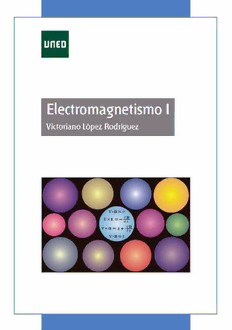
Electromagnetismo I
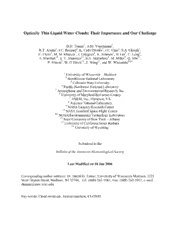
NASA Technical Reports Server (NTRS) 20080006488: Optically Thin Liquid Water Clouds: Their Importance and Our Challenge
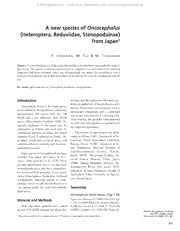
A new species of Oncocephalus (Heteroptera, Reduviidae, Stenopodainae) from Japan
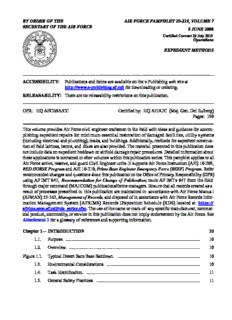
BY ORDER OF THE SECRETARY OF THE AIR FORCE AIR FORCE PAMPHLET 10-219, VOLUME ...
![Algèbre Commutative: Méthodes constructives - Modules projectifs de type fini [preliminary version 22 August 2011] book image](https://cdn-2.pdfdrive.to/media/content/thumbnails/e727681a-538f-4112-8392-f9db5ac38db2.webp)
Algèbre Commutative: Méthodes constructives - Modules projectifs de type fini [preliminary version 22 August 2011]

Carrie
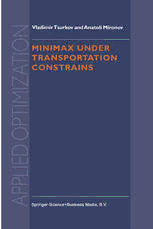
Minimax Under Transportation Constrains
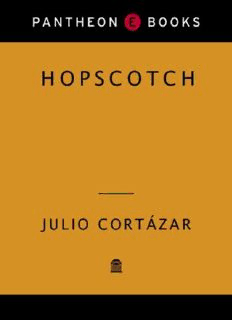
Hopscotch: A Novel
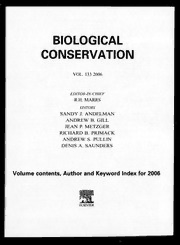
Biological Conservation 2006: Vol 127 Index
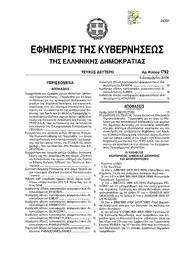
Greek Government Gazette: Part 2, 2006 no. 1792
